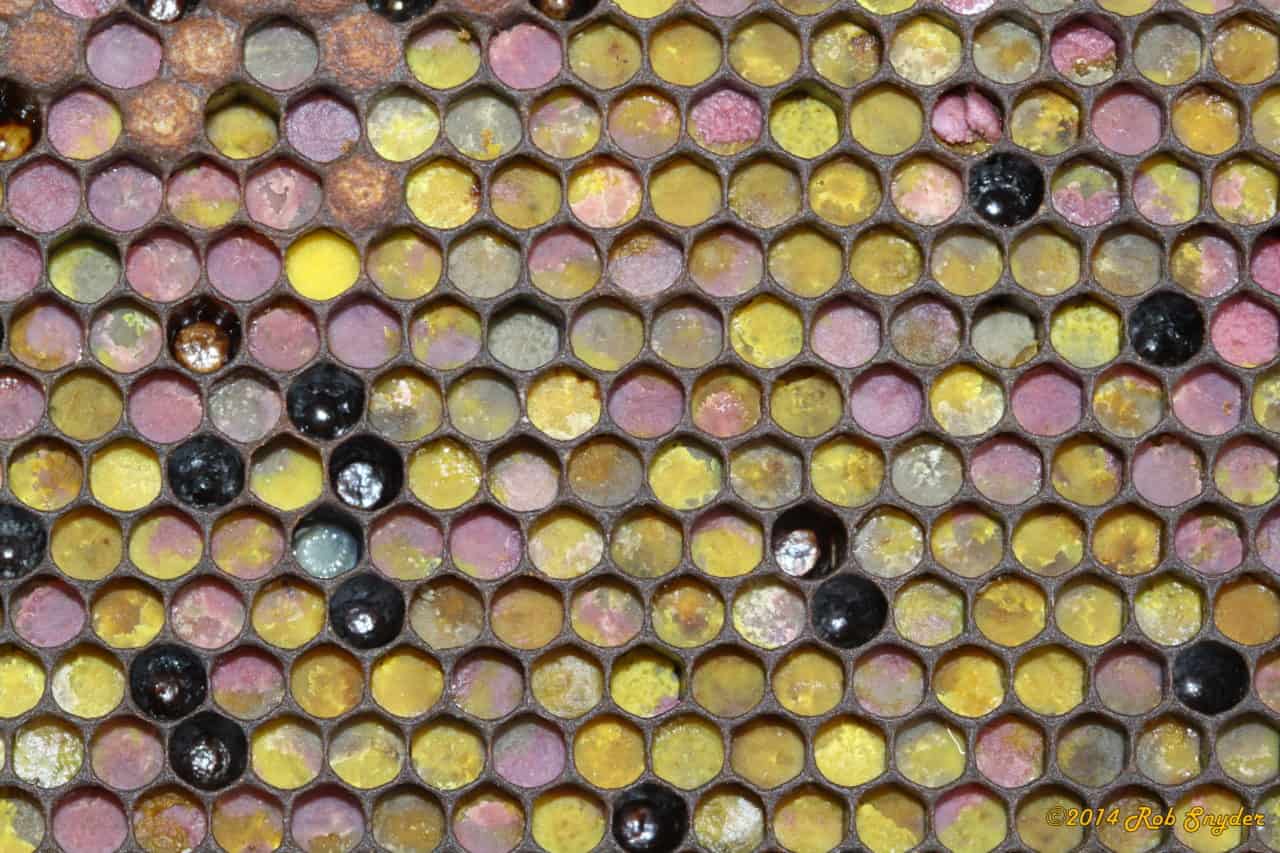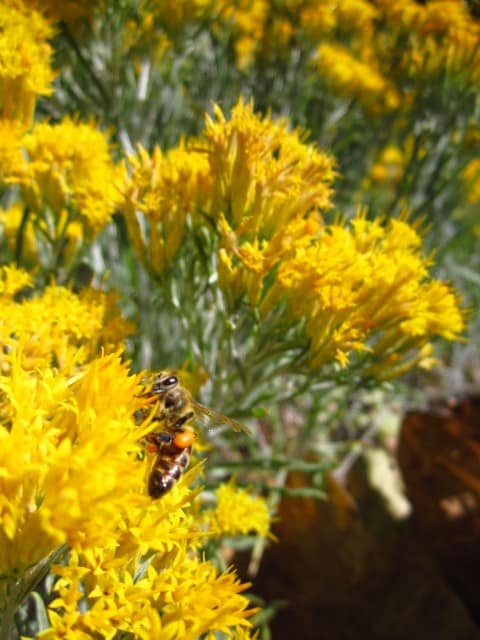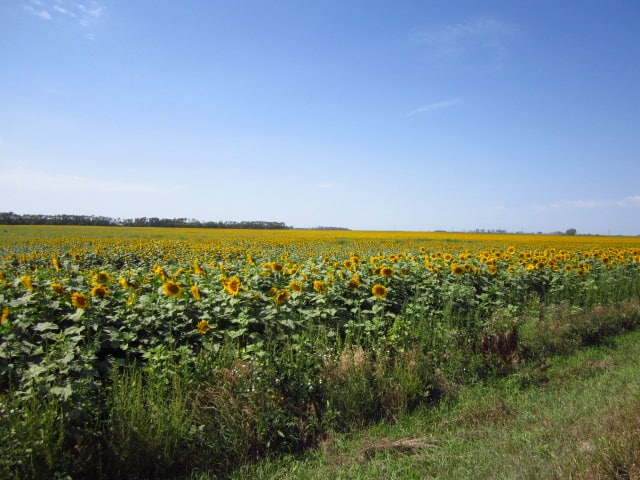As January comes to a close and much of the country is still buried in snow, signs of spring are beginning to show here in Northern California. After receiving above-average rainfall this winter, the land feels as if it's ready to burst with life after years of severe drought. Farmers and beekeepers already have high expectations for the year as reservoirs fill and the land soaks up rainfall. Forage for bees in most of California has been been very scarce in recent years and beekeepers have relied on near year-round protein feeding. This is especially crucial in preparation for taking the bees into the almond…
Category: Honey Bee Forage
Real Time Disease Load Monitoring Pollen Diversity
It’s the end of another honey bee season - and as the little gals are hunkering down, bracing for the cold winds of winter, our lab technicians are getting to work compiling data and publishing reports. Also coming with the end of the season is the close of our second official year of a project called Tier 4, or Real Time Disease Load Monitoring. This project provides colony health information to commercial, sideline and small-scale beekeepers. This year, fifteen of our Tier 4 participants collaborated with us on the Pollen Trap Collection Pilot study. The purpose of the pollen trap project is to give beekeepers…
Spring in California 2014
The most opportune time for honey bee colonies in most areas of the U.S. is during spring build-up. The surplus of pollen and nectar that usually accompanies spring allows a growing colony to create a surplus of pollen and honey. It is also a time of year where the colony is trying to work through its kinks and get the colonies population dynamics under control as far as nurse bee to worker ratio. This ratio is crucial for hive ventilation and keeping moisture and bacteria from infiltrating the hive and causing problems. Some diseases that arise during this opportunistic time period are Chalkbrood, AFB, EFB…
Spotlight on Buckwheat
Brought to America in the 1600s by Dutch settlers, buckwheat is on the mind of the average American only when its name is followed by the word pancakes. The plant, Fagopyrum esculentum, was domesticated in Asia some 5,000 to 6,000 years ago and spread in cultivation across Europe. In the U.S. buckwheat was historically grown in highest acreage in Pennsylvania and New York. The greatest acreage has now shifted to the north-central states, hence the relevance for buckwheat field research trials on the University of Minnesota, St. Paul Campus. Fagopyrum esculentum follows the forb/herb growth pattern, meaning it is a vascular plant with little woody tissue aboveground. It…
Spotlight on Rabbitbrush
Sources of fall forage are ever important as we head into winter in California. With a bloom period ranging from August through October, rabbitbrush is one such source that provides both nectar and pollen. There are many species of rabbitbrush which range from British Columbia in the North to New Mexico in the South, California in the West to Nebraska in the East. Of these species of Chrysothamnus I will focus on one, Chrysothamnus viscidiflorus. Commonly known as yellow or sometimes green rabbitbrush, this plant is a member of the family Asteraceae. In California, C. viscidiflorus ranges from the Cascade and Klamath Ranges in the…
Spotlight on Gum Plant
North Dakota landscapes, both farmed and fallow, are golden-hued with the onset of sunflower, goldenrod and gum plant bloom. These three plants belong to the family Asteraceae, commonly called the Aster or Sunflower Family. While sunflower and goldenrod are well-known late summer sources of forage, gum plant also provides a source of nectar and pollen for bees. Native to North America, Grindelia species occur throughout the lower forty-eight with the exception of the southeastern states. Grindelia squarrosa, or curlycup gum plant, occurs in Great Plains rangeland and is the most wide-ranging species in the genus Grindelia. G.squarrosa is a biennial or short-term perennial with peak…
Bees in bare almonds
Right now, beekeepers are pretty much done with moving bees across the country and into the almonds. The beekeepers we work with are doing the same thing - moving colonies from their different yard locations across Northern California into the almonds. Now, everyone is anxiously awaiting bloom. The Blue Diamond Almond company has a website to estimate bloom time. Almonds are so dependent on bees to get a crop and beekeepers are paid a premium price for their colonies (why some beekeepers come in from the east coast), so this is a really anxious time for both parties. Everyone just hopes for good enough weather…
Centaurea stoebe and Pollinators (Part 3)
In the previous two blogs, I have talked about the invasive plant “Spotted Knapweed.” Centaurea stoebe is native to Europe and was introduced into the United States in the late 1800s through contaminated seed. Spotted knapweed is considered by some a nuisance because it displaces native plants and forage for livestock. The plant releases toxins which degrade livestock growth when foraged on. To insects and beekeepers this plant is beneficial by producing nectar and pollen sources. It can produce 1000 or more seeds per plant. These seeds can remain viable for several years in soil and may only show up a few years after introduction.…
Non-native bees and invasive plant species. (Part 2)
In the last blog, I talked about the invasive plant “Spotted Knapweed.” This plant is unique because it supports several oligolectic bee species, which means that the bees visit (for pollen and nectar) very specific host plant species. Lithurgus chrysurus, or the Mediterranean wood boring bee, is one of them (see previous blog). Another bee that feeds on this Centaurea species is Megachile apicalis, more commonly known as a leaf-cutter bee. This rare non-native species, like the L. chrysurus, is from the Mediterranean region. I have become familiar with both bees from collecting in my hometown in PA for the past 3 summers. To identify…
Invasive plants supporting invasive bees
I have been collecting insects since 2005 and I collected almost anything unique to the eye. A majority of my collection was Coleoptera and Hymenoptera. In 2008, I started collecting native bees when I was using bowl traps for the Pennsylvania Department of Agriculture. My collecting was concentrated in Montgomery, Chester and Lehigh County. Around this time the department was working on locating an invasive species by the name of Lithurgus chrysurus or the Mediterranean wood boring bee. The females cause damage to wood structures by burrowing into wood to nest. Overwintering of this bee occurs as prepupae inside a cocoon and they are…




